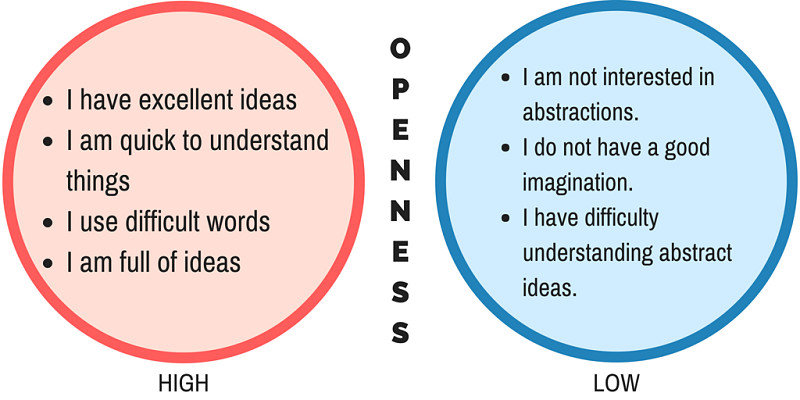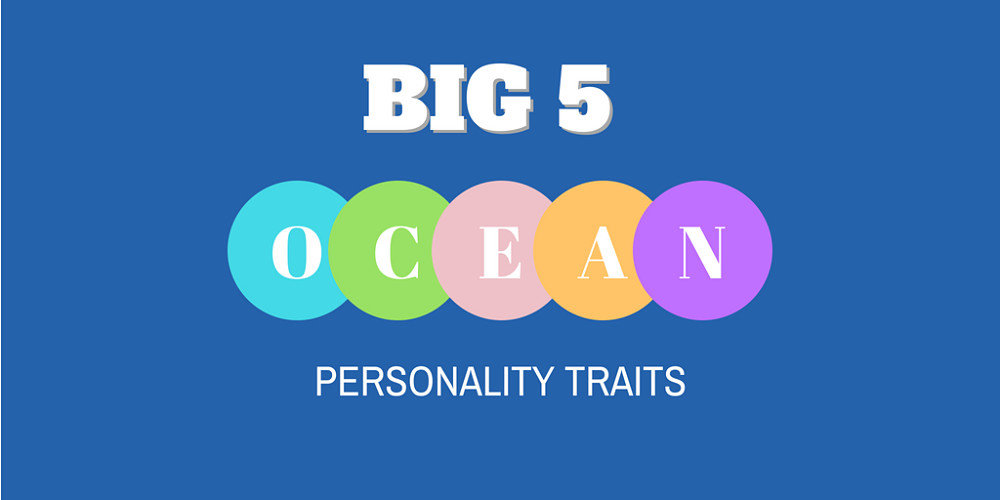The big 5 personality traits model (aka OCEAN personality traits model) is one of the easiest to use personality traits model. It helps us better interact with others by giving us the key to their patterns of behavior.
No two people are the same. No two people have the same personality traits. To try to model someone’s personality based on a small set of personality traits might be considered simplistic, but depending on where you use it, it can also be helpful.
The Big 5 Personality Traits Enter the Scene
Have you noticed how sometimes people’s decisions, actions, behaviors just don’t make sense?
Well, here’s the news: it makes sense for them! Always!
The misunderstanding comes from the fact that they are acting based on their personality traits, patterns of behavior and patterns of thought, emotions and values and we are analyzing based on ours.
Interesting piece of information, right? But rather theoretical, I would say.
Let’s see how it can be used in real life.
Personality Type Assessments
There are lots of personality type assessments (Myers-Brigg, DiSC, to name the most used). Insightful, and rather complex – in a positive way: you want a reliable result, don’t you?
However, if you want to be a little more practical, and start understanding the personality types of the people around you, and also how to use the knowledge to improve your interactions, I would recommend the Big Five Personality Traits (often represented by the OCEAN acronym).
The Big 5 Personality Traits – Openness, Conscientiousness, Extroversion, Agreeableness, and Neuroticism
Here’s what each one of the dimensions means:
Openness
Inventive/curious vs. consistent/cautious
Openness describes the degree of intellectual curiosity, creativity and a preference for novelty and variety a person has.
Openness is measured on a scale that goes from low openness (not understanding abstractions, not a good imagination, etc) to high openness (creativity, fast to understand new things and concepts, etc).

Conscientiousness
Efficient/organized vs. easy-going/careless
High conscientiousness people are reliable and prompt. Traits include being organized, methodical, and thorough.
Low conscientiousness is associated with flexibility and spontaneity, but can also appear as sloppiness and lack of reliability.
Extroversion
Outgoing/energetic vs. solitary/reserved
Extroverts get their energy and drive from others, while introverts are self-driven get their drive from within themselves.
Agreeableness
Friendly/compassionate vs. challenging/detached
High agreeableness is often seen as naive or submissive. Low agreeableness personalities are often competitive or challenging people, which can be seen as argumentativeness or untrustworthiness.
Neuroticism
Sensitive/nervous vs. secure/confident
Neuroticism is a measure of the degree of emotional stability and impulse control.
High Neuroticism
A low need for stability causes a reactive and excitable personality, often very dynamic individuals, but they can be perceived as unstable or insecure.
- I get irritated easily.
- I get stressed out easily.
- I get upset easily.
- I have frequent mood swings.
- I worry about things.
- I am much more anxious than most people.
Low Neuroticism
A high need for stability manifests itself as a stable and calm personality but can be seen as uninspiring and unconcerned.
- I am relaxed most of the time.
- I seldom feel blue.
Practical Use of the Big 5 Personality Traits
Step 1. First, determine your own personality type based on the big 5 personality traits
Step 2. Map the personality traits of your team members
Step 3. Adapt your behavior to their specific personality traits instead of defaulting to yours.
The Big 5 Personality Traits in Action
Let’s say you score high on the openness scale. You like to try new things. You see everything as an experiment. As the famous Facebook quote, you like to “move fast and break things”. You are an innovator and you like to disrupt the old ways of doing things.
This is all good, but your team member might be low on this dimension. Can you imagine the impact of your attitude on them? Let’s just say that you might scare them off.
Assigning them new things outside their competence zone won’t be seen as an adventure, as an opportunity to learn new things, but rather as a threat. Instead, you could assign them tasks in their competence zone, where they can show how well they master a specific skill.
They will be happy, they will thrive and the task will be completed on time and well.
Did this story make you think back to your recent interactions that didn’t go that well? Might it have been due, amongst other things, to a misalignment in personality styles?
Do you have examples where not adapting to your team member’s personality style had a negative impact on the relationship? Or, on the contrary, when adapting had a positive impact?
If you want to learn more:
Vanessa Van Edwards – Captivate: The Science of Succeeding with People
Joe Navarro – What Every Body Is Saying: An Ex-FBI Agent’s Guide to Speed-Reading People
Robert B. Cialdini – Influence: The Psychology of Persuasion






